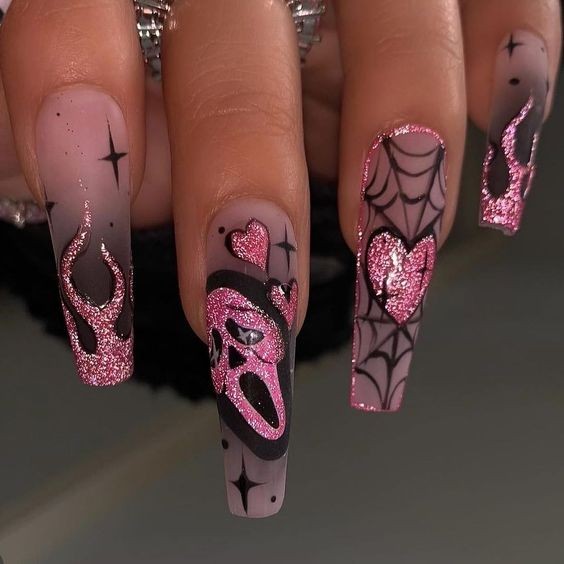The Stunning World of Nail Art: An Exploration of Creativity and Technique
Nail art has evolved from a simple grooming ritual into a sophisticated and expressive form of personal artistry. From minimalist designs to intricate masterpieces, the world of nail art is a vibrant reflection of cultural trends, personal style, and artistic innovation. This article delves into the history, techniques, and trends of stunning nail art, offering insights into how this medium has captured the imagination of millions.
A Brief History of Nail Art
The art of decorating nails dates back thousands of years. The ancient Egyptians were among the first to embellish their nails with natural dyes and henna, using their elaborate designs to signify social status and beauty. In the early 20th century, nail polish was introduced, revolutionizing nail art by offering a wider array of colors and finishes. The 1980s and 1990s saw the rise of nail art salons and the introduction of more elaborate techniques, laying the groundwork for the diverse and innovative practices we see today.
Techniques and Tools
Nail art encompasses a broad range of techniques, each contributing to its unique allure. Here are some of the most popular methods used by nail artists:
1. Polish Artistry: Traditional nail polish remains a staple for many nail artists. By layering different colors and finishes, artists can create a wide variety of effects, from glossy and matte to glittery and metallic.
2. Gel Nails: Gel nails offer a longer-lasting and more durable alternative to traditional polish. They are cured under UV or LED light, making them less prone to chipping and ideal for intricate designs. Gel nail art allows for more complex patterns and can be used to create stunning 3D effects.
3. Acrylics: Acrylic nails are a popular choice for those seeking both length and durability. Acrylics provide a sturdy base for nail art and can be sculpted into various shapes and designs. They also offer the flexibility to incorporate decorative elements such as rhinestones and foil.
4. Dip Powder: Dip powder nails involve dipping the nails into colored powder, which is then sealed with a clear topcoat. This technique is known for its long-lasting results and vibrant colors. It also eliminates the need for UV light, making it a popular choice for those concerned about light exposure.
5. Nail Stickers and Decals: For a quick and easy way to achieve elaborate designs, nail stickers and decals are an excellent option. They come in a variety of patterns and can be applied directly to the nail, making them ideal for those who want stunning results without a lot of effort.
6. Water Marbling: This technique involves floating different colors of polish on the surface of water and then dipping the nails into the water to create a swirling, marble-like effect. It requires precision and practice but can yield breathtaking results.
7. Stamping: Nail stamping involves transferring intricate designs from a metal plate onto the nail using a special stamper tool. This technique allows for the creation of detailed patterns and is perfect for those who want complex designs without freehand painting.
Trends in Nail Art
Nail art trends often reflect broader fashion and cultural movements. Here are some current trends that showcase the diversity and creativity of modern nail art:
1. Minimalist Designs: Simple, clean lines and subtle colors are popular for those who prefer a more understated look. Minimalist nail art often features geometric shapes, delicate dots, and understated patterns.
2. Nail Art as Self-Expression: Personalized designs that reflect individual interests or experiences are gaining popularity. From custom portraits to unique symbols, nail art is becoming a canvas for personal stories and expressions.
3. 3D Nail Art: Adding embellishments like rhinestones, pearls, and studs creates a three-dimensional effect that adds texture and interest to the nails. This trend often involves elaborate designs that stand out and make a statement.
4. Floral Patterns: Floral designs remain a timeless favorite in nail art. Whether through delicate hand-painted flowers or intricate decals, floral patterns add a touch of elegance and charm to any manicure.
5. Holographic and Iridescent Finishes: Nail polishes with holographic or iridescent finishes create a mesmerizing effect that changes color depending on the angle of light. These finishes add a futuristic and eye-catching element to nail art.
6. Nail Art as a Form of Therapy: Many people find the process of creating or receiving nail art to be a relaxing and therapeutic experience. The focus and creativity involved can provide a sense of accomplishment and joy.
The Future of Nail Art
As technology and materials continue to advance, the future of nail art looks incredibly promising. Innovations such as 3D printing and augmented reality are poised to transform how we approach nail design. 3D printing could allow for even more complex and customized designs, while augmented reality might enable virtual try-ons and interactive nail art experiences.
Conclusion
Nail art is more than just a beauty trend; it is a dynamic and evolving art form that reflects the creativity and individuality of its practitioners. From its ancient origins to its contemporary innovations, nail art continues to captivate and inspire. Whether you prefer classic designs or cutting-edge techniques, the stunning world of nail art offers endless possibilities for self-expression and artistic exploration.






